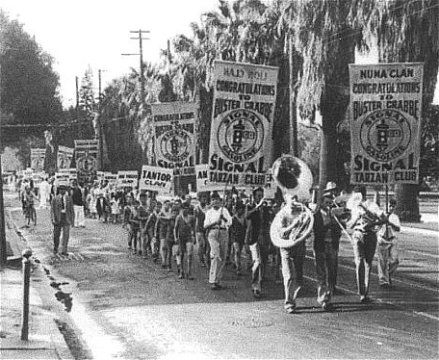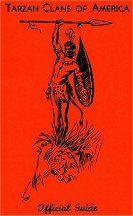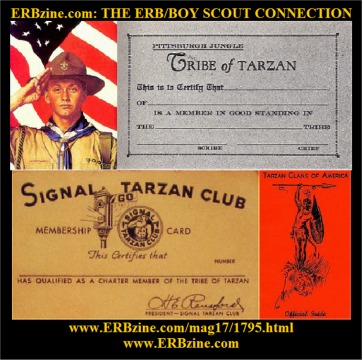Chapter
III - The Boy Scouts of America
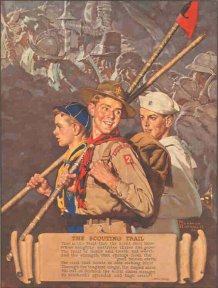
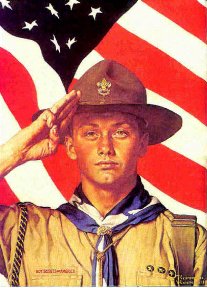
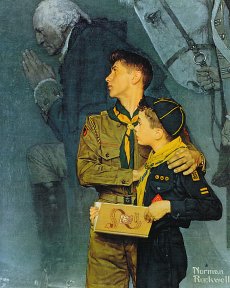 The Need
The Need
"If boys are to grow into sturdy,
self-reliant, productive citizens they must have much outdoor life and
get the training in personal initiative and resourcefulness, keenness of
perception, and alertness of action, courage, cheerful obedience, and ability
to command, self-control, ability to do team work, and the other many qualities
that can be developed in healthy outdoor sport."
With the above thought in mind,
congress granted a federal charter to the infant organization in response
to a bill introduced in March , 1910, known as H. R. 24747. A conference
was then called of representatives from 37 different organizations having
a definite interest in boy life. Men of national reputation were invited
to associate themselves with the new movement as members of the National
Council, which, through an executive board, was given full power to direct
the movement.
In the meantime the movement had
attracted attention in all parts of the country, and numerous groups of
boys had been organized using the English literature. In fact, the growth
was so rapid that it immediately became necessary to open a national office.
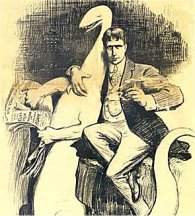 Unfortunately,
the enthusiasm of the general public in accepting the Scouting idea, led
to the development of a number of movements unrelated to each other. Happily,
however, all of these organizations were led to merge in and with the Boy
Scouts of America, with the exception of the American Boy Scouts,
which was incorporated on June 9, 1910, organized under the patronage
of Mr. William Randolph Hearst. This organization was the occasion
of considerable embarrassment, its name resembling so much the name of
the original organization that many people confused the two, taking them
for the same. It should be noted here that there was and is a very distinct
difference, in that the American Boy Scouts were organized along military
lines, given strictly military drill, and for military purposes.
Unfortunately,
the enthusiasm of the general public in accepting the Scouting idea, led
to the development of a number of movements unrelated to each other. Happily,
however, all of these organizations were led to merge in and with the Boy
Scouts of America, with the exception of the American Boy Scouts,
which was incorporated on June 9, 1910, organized under the patronage
of Mr. William Randolph Hearst. This organization was the occasion
of considerable embarrassment, its name resembling so much the name of
the original organization that many people confused the two, taking them
for the same. It should be noted here that there was and is a very distinct
difference, in that the American Boy Scouts were organized along military
lines, given strictly military drill, and for military purposes.
Absolutely Non-Militaristic
The original organization, the Boy Scouts of America,
on the other hand, was and is entirely non-militaristic. Its constitution
and by-laws forbid involving the organization in any matter of political
character. There neither was nor is any effort, or any possibility of making
any effort to train the boy away from his own political home environment.
The scout master has no more to do with politics or militarism than has
the school teacher or Sunday school teacher. Its program is base on the
effort to induce the boy to learn for himself rather than to be taught
by others. It teaches resourcefulness and develops the power of initiative;
also develops character, and trains for citizenship.
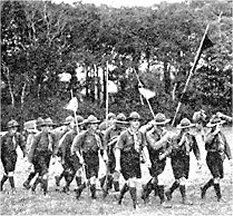 Although
the American Boy Scouts subsequently changed its name to the United
States Boy Scout, it finally became necessary, in 1917, after many
years of the most patient effort in trying to secure amicable recognition
of their rights, for the Boy Scouts of America to enter suit against the
"United States Boy Scout," that the defendant, its officers and agents
and each of them, be enjoined and restrained from using its name and otherwise
the words 'Boy Scout,' or 'Boy Scouts,' or the words 'Scout,' 'Scouts,'
or 'Scouting,' or any adaptation thereof.
Although
the American Boy Scouts subsequently changed its name to the United
States Boy Scout, it finally became necessary, in 1917, after many
years of the most patient effort in trying to secure amicable recognition
of their rights, for the Boy Scouts of America to enter suit against the
"United States Boy Scout," that the defendant, its officers and agents
and each of them, be enjoined and restrained from using its name and otherwise
the words 'Boy Scout,' or 'Boy Scouts,' or the words 'Scout,' 'Scouts,'
or 'Scouting,' or any adaptation thereof.
This was necessary to protect the boyhood of America from
exploitation at the hands of various groups who might, and, indeed did,
use the word "Scout" for ends which did not involve for the boy the character
development program which Sir Robert S. S. Baden-Powell had made basic
in the word "Scout."
The result of this hotly contested suit was that judgment
was given the plaintiff protecting the Boy Scouts of America, and restraining
the United States Boy Scout from continuing as such, and ruling was thus
made that no organization should use the words "Scout," "Scouts," or "Scouting,"
or any adapt ion thereof, unless duly registered as part of the original
organization, the Boy Scouts of America.
Chapter
IV - The Movement Reaches the San Fernando Valley
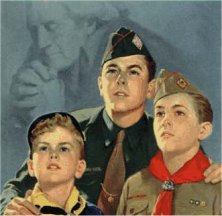 The
Boy Scout movement continued to grow, passing all bounds in the vast proportions
towards which it soared, until there were few spots in America which were
not actively covered by local councils, who hired men to give their entire
time to the work of guiding the Scout work, and upholding its standards.
The
Boy Scout movement continued to grow, passing all bounds in the vast proportions
towards which it soared, until there were few spots in America which were
not actively covered by local councils, who hired men to give their entire
time to the work of guiding the Scout work, and upholding its standards.
On the 31st of May, 1923, a body of men representing all
parts of this valley gathered in the French room of the Black Cat Cafe
in San Fernando for the purpose of effecting a new branch of the Boy Scouts
of America, to be known as the San Fernando Valley Council, that
our boys in this valley might have equal opportunity with the rest of America's
growing boyhood to keep themselves "physically strong, mentally awake,
and morally straight." The organization was completed, and has proven a
success already. Being not unlike the national organization or other parts
of it, it has already reached surprising proportions. For this we have
to thank the "builders" of the valley, or in other words, the Kiwanis Clubs,
who put the movement across, sponsored it, and even underwrote the financing
of it.
From all indications, we have ahead of us a year of prosperity,
not only in Scouting, but in every respect, and during that year our boys
must be taken care of, and to insure their most rapid physical , mental
and moral growth, we must finance our Boy Scout movement, and keep it going.
We now have enrolled upwards of 250 Boy Scouts. Our aim is to triple this
during the coming year. To do this will cost money. Is it worth it? Is
your boy worth it? Is ten dollars too much to spend on the mental, moral,
and physical development of anyone of the boys in our valley? Indeed, it
is not!
Do you, Mr. Employer, realize what the Boy Scout movement
is worth to you? If you do, it will not take many like you to support this
council of Boy Scouts. Do you, Mr. Boy's Neighbor, appreciate its full
value to you, or do you, Mr. Boy's Father? Twenty dollars of your money
will make it possible to direct the surplus energies of both those boy
of yours into real constructive efforts for one whole year. Within the
next few days many of the men of the San Fernando valley will give not
only of their money, but their valuable time, to raise this fund. If we
do not hear from you, Mr. Citizen, someone of these men will call on you,
to give you the opportunity to place some of your money in "Boy Life,"
the most splendid of investments. In order that their time might be conserved,
bring in, or mail in your check to the treasurer of the council, Mr. F.
J. Hendershot, at the Pacific Northwest Bank of San Fernando, and remember,
this is not a donation, but an investment, of which one day you will be
proud.
The End.

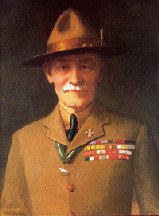 It
was during the winter of 1899-1900 that the Thirteenth Hussars, a division
of the English army, under the command of Sir Robert Baden-Powell,
and at that time actively engaged in the South African war, had taken quarters
in a small town in South Africa, when it was surrounded by the opposing
forces, and all communications cut off.
It
was during the winter of 1899-1900 that the Thirteenth Hussars, a division
of the English army, under the command of Sir Robert Baden-Powell,
and at that time actively engaged in the South African war, had taken quarters
in a small town in South Africa, when it was surrounded by the opposing
forces, and all communications cut off.
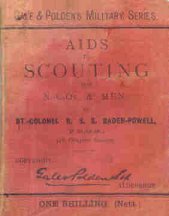 This
was done, with the result that the day was saved, and Sir Baden-Powell's
eyes were opened to the fact that the average boy was capable of taking
far greater responsibilities than had ever been believed, if only he were
trusted, and that if their training were made to appeal to them, they learned
very rapidly.
This
was done, with the result that the day was saved, and Sir Baden-Powell's
eyes were opened to the fact that the average boy was capable of taking
far greater responsibilities than had ever been believed, if only he were
trusted, and that if their training were made to appeal to them, they learned
very rapidly.
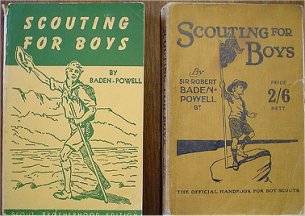
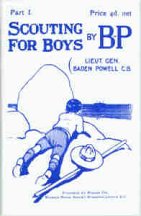
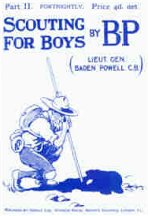
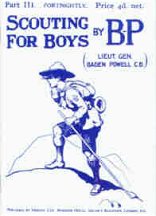
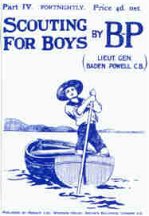
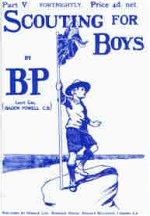
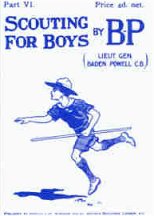
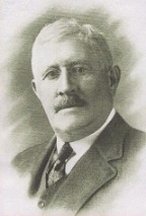 It
was about the time that Sir Baden-Powell left the army and took over the
development of the English Boy Scouts that Mr. W.D. Boyce of Chicago was
traveling in Europe, and while searching for a certain location in the
congested part of London, a boy , noticing his bewilderment, saluted and
asked if he might be of service.
It
was about the time that Sir Baden-Powell left the army and took over the
development of the English Boy Scouts that Mr. W.D. Boyce of Chicago was
traveling in Europe, and while searching for a certain location in the
congested part of London, a boy , noticing his bewilderment, saluted and
asked if he might be of service.
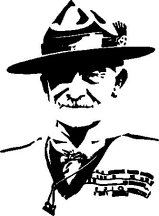 At
this the young Englishman exhibited great surprise that everyone on earth
had not heard of Sir Baden-Powell's Boy Scouts, and after answering all
of the questions which he could, he showed the American to Scout headquarters,
where our friend became still more interested, and asked many questions,
the result of which was that when he returned to America he brought with
him a trunk full of Boy Scout literature; this he showed to his friends,
telling them of his experiences, and how the Scout whose acquaintance he
had made, was so much a man, full of resourcefulness and initiative, and
yet a boy in the strongest sense of the word, and how it was due to the
training of this wonderful scout program, and, of course, his friends being
sensible, broad-minded people, they also became immensely interested.
At
this the young Englishman exhibited great surprise that everyone on earth
had not heard of Sir Baden-Powell's Boy Scouts, and after answering all
of the questions which he could, he showed the American to Scout headquarters,
where our friend became still more interested, and asked many questions,
the result of which was that when he returned to America he brought with
him a trunk full of Boy Scout literature; this he showed to his friends,
telling them of his experiences, and how the Scout whose acquaintance he
had made, was so much a man, full of resourcefulness and initiative, and
yet a boy in the strongest sense of the word, and how it was due to the
training of this wonderful scout program, and, of course, his friends being
sensible, broad-minded people, they also became immensely interested.
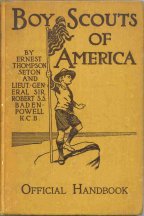
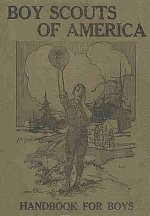
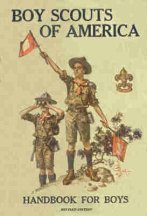
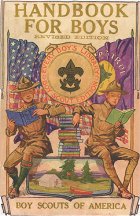
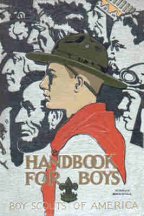



 Unfortunately,
the enthusiasm of the general public in accepting the Scouting idea, led
to the development of a number of movements unrelated to each other. Happily,
however, all of these organizations were led to merge in and with the Boy
Scouts of America, with the exception of the American Boy Scouts,
which was incorporated on June 9, 1910, organized under the patronage
of Mr. William Randolph Hearst. This organization was the occasion
of considerable embarrassment, its name resembling so much the name of
the original organization that many people confused the two, taking them
for the same. It should be noted here that there was and is a very distinct
difference, in that the American Boy Scouts were organized along military
lines, given strictly military drill, and for military purposes.
Unfortunately,
the enthusiasm of the general public in accepting the Scouting idea, led
to the development of a number of movements unrelated to each other. Happily,
however, all of these organizations were led to merge in and with the Boy
Scouts of America, with the exception of the American Boy Scouts,
which was incorporated on June 9, 1910, organized under the patronage
of Mr. William Randolph Hearst. This organization was the occasion
of considerable embarrassment, its name resembling so much the name of
the original organization that many people confused the two, taking them
for the same. It should be noted here that there was and is a very distinct
difference, in that the American Boy Scouts were organized along military
lines, given strictly military drill, and for military purposes.
 Although
the American Boy Scouts subsequently changed its name to the United
States Boy Scout, it finally became necessary, in 1917, after many
years of the most patient effort in trying to secure amicable recognition
of their rights, for the Boy Scouts of America to enter suit against the
"United States Boy Scout," that the defendant, its officers and agents
and each of them, be enjoined and restrained from using its name and otherwise
the words 'Boy Scout,' or 'Boy Scouts,' or the words 'Scout,' 'Scouts,'
or 'Scouting,' or any adaptation thereof.
Although
the American Boy Scouts subsequently changed its name to the United
States Boy Scout, it finally became necessary, in 1917, after many
years of the most patient effort in trying to secure amicable recognition
of their rights, for the Boy Scouts of America to enter suit against the
"United States Boy Scout," that the defendant, its officers and agents
and each of them, be enjoined and restrained from using its name and otherwise
the words 'Boy Scout,' or 'Boy Scouts,' or the words 'Scout,' 'Scouts,'
or 'Scouting,' or any adaptation thereof.
 The
Boy Scout movement continued to grow, passing all bounds in the vast proportions
towards which it soared, until there were few spots in America which were
not actively covered by local councils, who hired men to give their entire
time to the work of guiding the Scout work, and upholding its standards.
The
Boy Scout movement continued to grow, passing all bounds in the vast proportions
towards which it soared, until there were few spots in America which were
not actively covered by local councils, who hired men to give their entire
time to the work of guiding the Scout work, and upholding its standards.
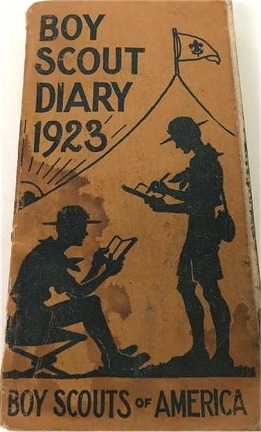
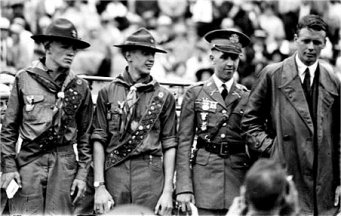
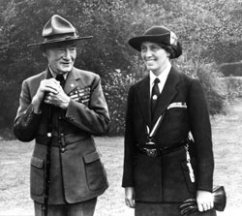
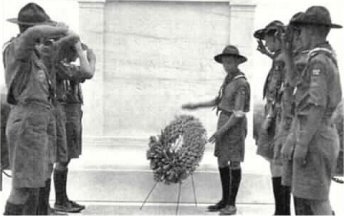
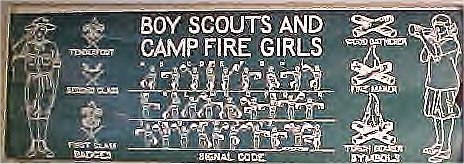
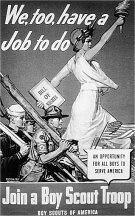

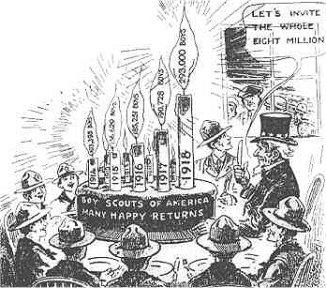
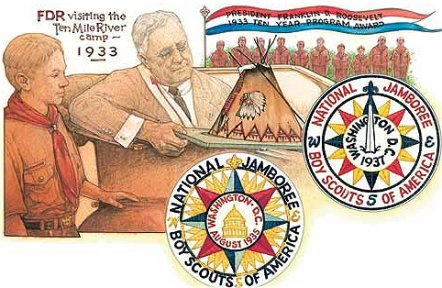
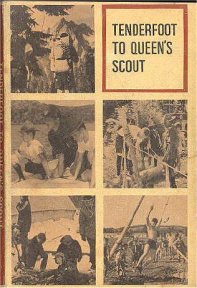
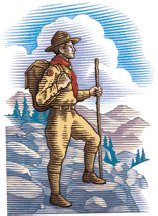
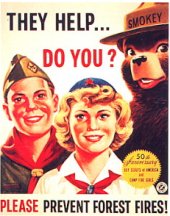
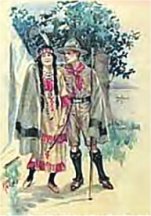
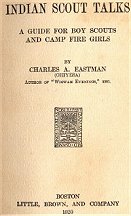
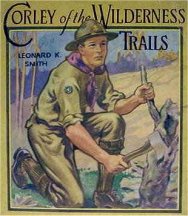
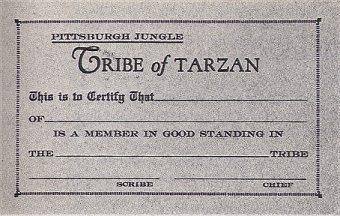
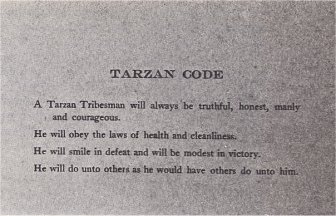
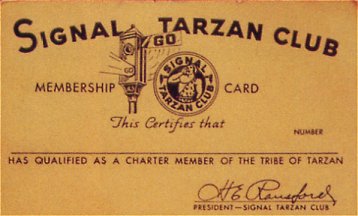 In
the early '30s Signal Oil launched a successful advertising campaign to
promote the Tarzan radio show. Through their service stations they offered
a blitz of Tarzan merchandise tie-ins and as the popularity of the show
grew across America, they created the Signal Tarzan Club and sent out membership
cards, buttons, photos and prizes to members.
In
the early '30s Signal Oil launched a successful advertising campaign to
promote the Tarzan radio show. Through their service stations they offered
a blitz of Tarzan merchandise tie-ins and as the popularity of the show
grew across America, they created the Signal Tarzan Club and sent out membership
cards, buttons, photos and prizes to members.
